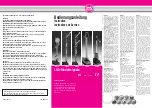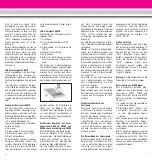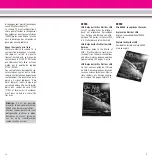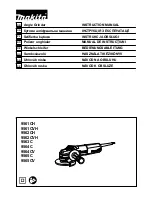
LGB Model Signals
50910/ 50920/50940/50950/
50960
Introductory Notes
Signals convey important commands
with visual signs. These orders are
transmitted between stationary
points (like signal boxes) and the
locomotives for safe operation.
Form Signals
With form signals, the instructions
are communicated through different
positions of the signal disks or the
signal arms. At the same time, col-
ored lenses are moved in front of a
signal lamp, using various colors to
represent commands that can be
seen clearly at night.
Light Signals
With light signals, the signal com-
mands are conveyed regardless of
the time of day through pre-set
orders and colors of signal lamps.
Light signals are used more and
more because they do not require
expensive maintenance which form
signals do require.
Arrangement of Signals
One must distinguish between “dis-
tant“ signals and “home“ signals.
Distant signals (No. 50910) give
notice to the train operator to antici-
pate a specific home signal position.
Prototypically, they stand as long a
distance before the home signal as
the longest train running. With a
closed distant signal (Vr0), the train
operator still has sufficient time to
reduce speed so that he can come to
a stop safely before the closed home
signal (Hp0).
A single-arm form signal (50920) is
used when the following stretch of
track is straight. If a slower speed is
indicated at a branching-off of the
track behind the signal (via switch-
es), double-armed form signals are
erected (50940). Illustration 5 shows
some examples:
a) Double-arm form signal used as
an entrance signal to a two track
station.
b) Single-arm form signal at a
straight stretch of track and a dou-
ble-arm form signal used as the
exit signal at the switching section
of track.
c) Distant signal with three signal
warnings and a single-arm home
signal at a straight stretch of track.
LGB Form Signals 50920, 50940
and 50960
Both of these signals include the
following pieces in their packaging:
1) Form Signal
2) EPL signal drive (LGB No.12010)
with supplementary switch (LGB
No. 1203ß)
3) Two insulated track pieces (LGB
No. 10153)
4) One diode
5) Cable to connect the 12030 with
the 10153
The home signal shows the “Stop!“
command (Hp0) with its horizontal-
ly-positioned signal arm and red sig-
nal light. The command “Proceed“
can be shown with an open signal
arm slanting upward and a green sig-
nal light.
The arm of the US Semaphore Signal
50960, on the contrary, moves into
sloping downward position, in case
of “line clear“.
Installation of the Form Home
Signals 50920, 50940 and 50960
At the position where the signal
should stand, install the insulated
track section (LGB No. 10153). On
this insulated track piece, screw on
the EPL signal drive and supplemen-
9
8
Signalrückstellung durch den Zug
Die Schaltung auf unserer Abbildung
14 sieht vor, daß die Lok mittels
Gleiskontakt 17100 (1700) das hinter
sich liegende Signal auf “Halt!“ stellt,
während “Fahrt frei!“ über das
Stellpult 51750 (5075N) geschaltet
wird.
Ähnliche Signalrückstellungsschalt-
ungen werden u.a. für die Ein-
richtung von Blockstellen benötigt.
Eine Lok, die ein auf “Fahrt frei!“ ste-
hendes Signal passiert hat, stellt das
nun hinter ihr liegende Signal über
einen Gleiskontakt 17100 (1700) auf
“Halt!“ und schließt damit den Block
für einen eventuell zu dicht nachfol-
genden Zug.
Achtung:
Das Flügelsignal, US-
Version 50960, läßt sich nicht zwi-
schen parallelen Gleisen plazieren.
Beim Betrieb mit dem LGB-
JUMBO, darf aus Sicherheits-
gründen nur die beigelegte Diode
verwendet werden (mindestens
5A).
GB
USA


























